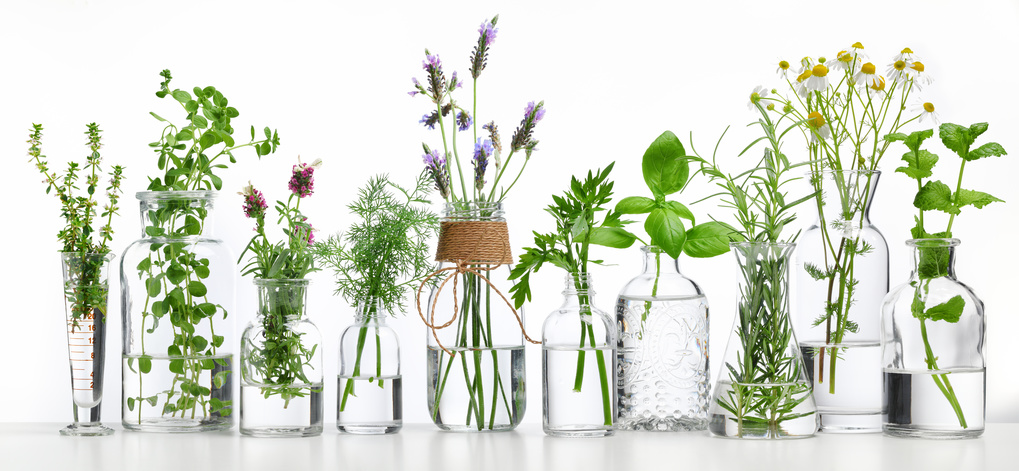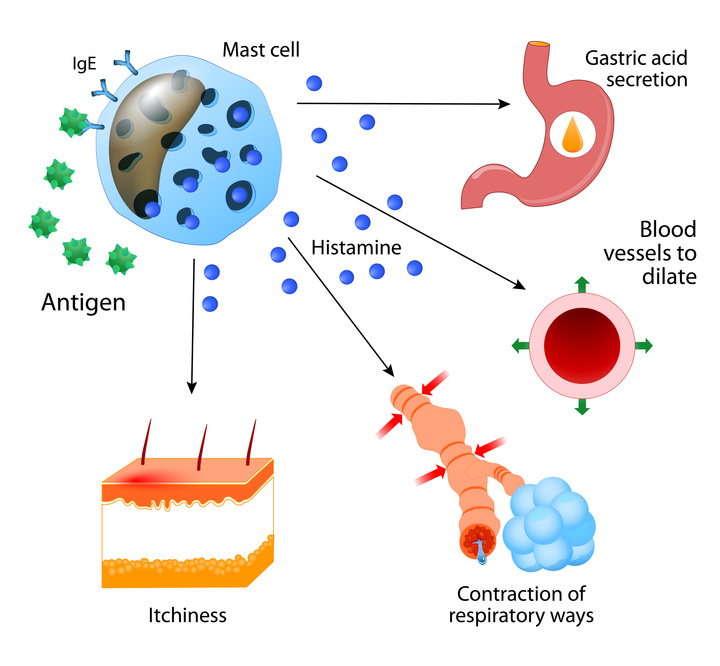 Indian Ayurvedic “medicine” has yielded a number of interesting natural antihistamines, as well as mast cell stabilisers. The latter is a white blood cell in the body that contains histamine. It releases histamine, as needed, in times of injury or allergy. Unfortunately stress is also a histamine from mast cells trigger, but Ashwagandha might also be beneficial for soothing frayed nerves. Always check with your doctor before adding anything new to your diet.
Ashwagandha is an important herb in the practice of the ancient Indian natural medicine. It’s considered to be an adaptogenic herb, which means that it will step up and perform according to what the body needs. Animal studies show that it increases stamina and prevents adrenal gland changes in stressful situations.
Indian Ayurvedic “medicine” has yielded a number of interesting natural antihistamines, as well as mast cell stabilisers. The latter is a white blood cell in the body that contains histamine. It releases histamine, as needed, in times of injury or allergy. Unfortunately stress is also a histamine from mast cells trigger, but Ashwagandha might also be beneficial for soothing frayed nerves. Always check with your doctor before adding anything new to your diet.
Ashwagandha is an important herb in the practice of the ancient Indian natural medicine. It’s considered to be an adaptogenic herb, which means that it will step up and perform according to what the body needs. Animal studies show that it increases stamina and prevents adrenal gland changes in stressful situations.
ASHWAGANDHA BENEFITS
This herb has shown promise in animal studies for the following conditions:- Stress: it’s been proven to have anti-anxiety properties
- Prevention of gastric ulcers
- Cancer: it shows anti-tumour activity
- Uterine fibroids: may be useful in their management
- Memory: it enhances cognition and has been shown to be beneficial in children and the elderly with memory loss
- Neurodegenerative disease: it’s been found useful in Parkinson’s, Huntington’s, and Alzheimer’s.
- Depression: it boosts brain GABA
- Improves mitochondria health
- Is an anti-inflammatory and anti-arthritic
ASHWAGANDHA HISTAMINE & MAST CELLS
I’ve spoken consistently about the need to look beyond histamine in controlling histamine intolerance and symptoms of inflammation. The photo below shows how mast cells contain histamine, and what happens when they’re triggered. While it’s true that histamine in foods can trigger mast cells into releasing more histamine, we need to keep in mind that histamine is only one of many inflammatory mediations released from mast cells. So focusing on an anti-inflammatory diet overall may be a better strategy. I outline my approach here. Withaferin A, a compound found in Ashawaghandha, has been shown to prevent mast cells from releasing histamine and other inflammatory mediators when challenged by stress or antigens. It mediates the release of:
Withaferin A, a compound found in Ashawaghandha, has been shown to prevent mast cells from releasing histamine and other inflammatory mediators when challenged by stress or antigens. It mediates the release of:
- COX-2
- NF
- Interleukins
- Histamine
- Prostaglandins
- Leukotrienes
SHOULD YOU TRY IT?
Just because something is natural, doesn’t mean it’s good for us. Especially those with mast cell and histamine disorders, so please exercise caution and definitely check with a doctor. I’ve found that most of my readers (whom I’ve had the pleasure of connecting with) have experienced significant negative reactions to medications and supplements, even ones with antihistamine properties. I’ve personally found eating a wide variety of foods with antihistamine and anti-inflammatory properties to be very rewarding and yielded excellent results for me. But, I have begun dabbling with supplements again this last year. Keeping your histamine/inflammation bucket empty is a great starting strategy. Read about that here.You’ll find recipes full of foods with antihistamine and anti-inflammatory properties my books Anti-Recipes and The Anti-Cookbook
CLICK HERE TO CREATE YOUR OWN PERSONALISED HEALING HISTAMINE PLAN.
——-references—–Hindawi. “Withaferin A Inhibits Nuclear Factor-κB-Dependent Pro-Inflammatory and Stress Response Pathways in the Astrocytes.” Neural Plasticity, Hindawi, 21 July 2015, www.hindawi.com/journals/np/2015/381964/ref/.
Singh, Narendra, et al. “An Overview on Ashwagandha: A Rasayana (Rejuvenator) of Ayurveda.” African Journal of Traditional, Complementary, and Alternative Medicines, African Networks on Ethnomedicines, 2011, www.ncbi.nlm.nih.gov/pmc/articles/PMC3252722/.













